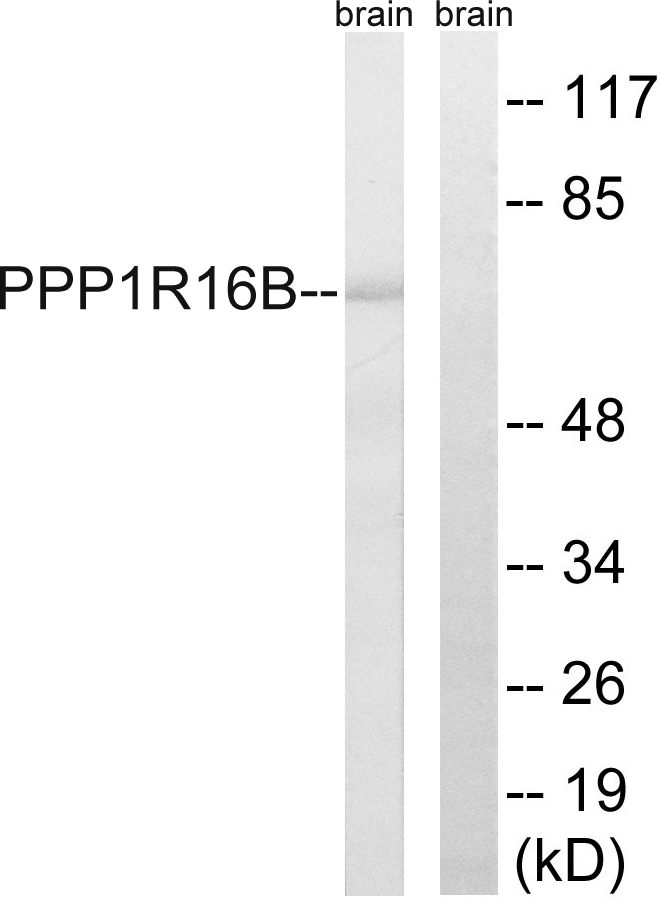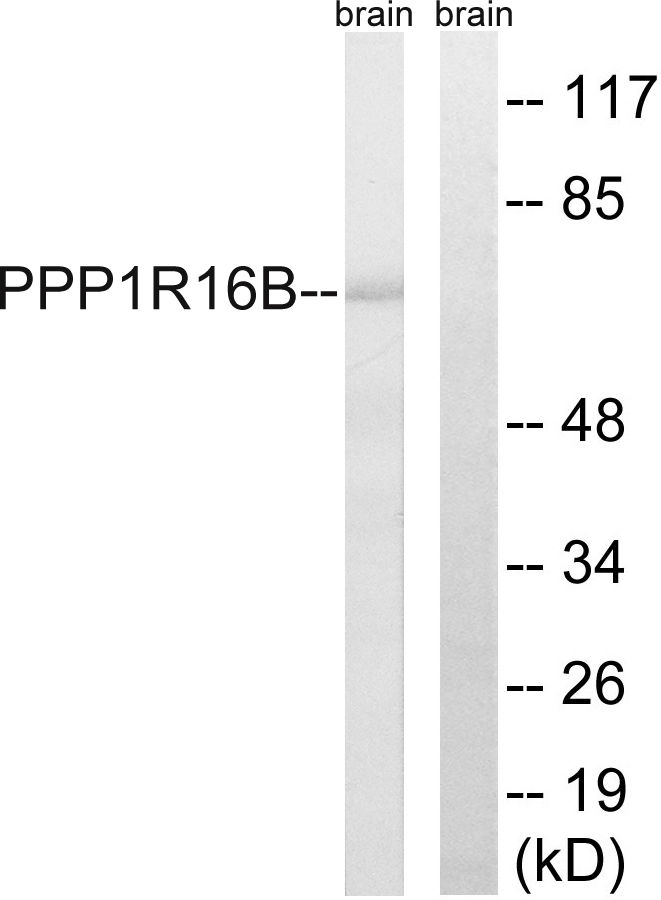
WB analysis of mouse brain lysates using GTX87549 PPP1R16B antibody. The lane on the right is blocked with the synthesized peptide.
PPP1R16B antibody
GTX87549
ApplicationsWestern Blot
Product group Antibodies
TargetPPP1R16B
Overview
- SupplierGeneTex
- Product NamePPP1R16B antibody
- Delivery Days Customer9
- Application Supplier NoteWB: 1:500~1:1000. *Optimal dilutions/concentrations should be determined by the researcher.Not tested in other applications.
- ApplicationsWestern Blot
- CertificationResearch Use Only
- ClonalityPolyclonal
- ConjugateUnconjugated
- Gene ID26051
- Target namePPP1R16B
- Target descriptionprotein phosphatase 1 regulatory subunit 16B
- Target synonymsANKRD4, TIMAP, protein phosphatase 1 regulatory inhibitor subunit 16B, CAAX box protein TIMAP, TGF-beta-inhibited membrane-associated protein, ankyrin repeat domain protein 4, ankyrin repeat domain-containing protein 4, hTIMAP, protein phosphatase 1, regulatory (inhibitor) subunit 16B
- HostRabbit
- IsotypeIgG
- Protein IDQ96T49
- Protein NameProtein phosphatase 1 regulatory inhibitor subunit 16B
- Scientific DescriptionThe protein encoded by this gene is membrane-associated and contains five ankyrin repeats, a protein phosphatase-1-interacting domain, and a carboxy-terminal CAAX box domain. Synthesis of the encoded protein is inhibited by transforming growth factor beta-1. The protein may bind to the membrane through its CAAX box domain and may act as a signaling molecule through interaction with protein phosphatase-1. Alternative splicing results in multiple transcript variants encoding different isoforms that may undergo similar processing to generate mature protein. [provided by RefSeq, Sep 2015]
- Storage Instruction-20°C or -80°C,2°C to 8°C
- UNSPSC12352203




